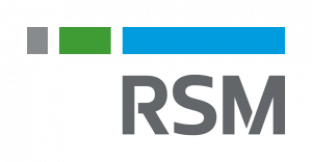
Beyond the balance sheet – capitalising your IP & software development costs
This is a guest post from Tech South West StartUp Studio partner RSM, a leading provider of audit, tax and consulting services to middle market leaders.
 Many start-up or high growth technology companies face significant initial costs in the creation of their software platform and products, which once completed, will have an enduring benefit to the company for many years.
Many start-up or high growth technology companies face significant initial costs in the creation of their software platform and products, which once completed, will have an enduring benefit to the company for many years.
One area we commonly discuss with our clients is how to appropriately treat these software development costs – should they be expensed in the P/L or should they be capitalised?
The capitalisation of these costs could significantly impact a company’s financials including their EBITDA, which is a benchmark that many investors and PE houses focus on to determine the valuation of a company and assess its performance.
The accounting standards have specific requirements but broadly the company spend on intellectual property development costs (but not research costs) may be recognised as internally generated intangible fixed assets if the entity can demonstrate:
- a) the technical feasibility of completing the intangible asset so that it will be available for use or sale
- b) its intention to complete the intangible asset and use or sell it
- c) its ability to use or sell the intangible asset
- d) how the intangible asset will generate probable future economic benefits
- e) the availability of adequate technical, financial and other resources to complete the development and to use or sell the intangible asset
- f) its ability to reliably measure the expenditure attributable to the intangible asset during its development.
Provided the above criteria are met, it may well be preferable under FRS 102 to capitalise these costs as an asset in the balance sheet. It’s important to note this is a complex accounting area but a good accountant will be able to guide and advise you on the correct application of the standard. The rules differ under International standards – but these are most commonly used by larger, listed businesses.
What are the downsides?
The significant proportion of costs will be staff costs. Staff costs often contribute significantly to a company’s financial performance in the early stages of development, leading to trading losses which can be carried forward. When such costs are no longer in the P/L – it is possible that this could result in taxable profits arising in a period – particularly if the IP is not yet being amortised, and if there are other income streams in the business.
Whilst on one hand a profitable company would be a cause for celebration. this may also lead to taxable profits arising, with less losses carried forward from previous periods to use against future taxable profits.
Will this impact my R&D claim?
In short – No.
Where qualifying expenditure is capitalised, as long as the project and the costs incurred are qualifying for R&D for tax purposes, a claim can be made for a 100% deduction in the period for these development costs.
This claim, a section 1308 CTA 2009 claim (“s.1308 claim”) effectively enables a deduction to be made for the costs which would have been deductible had they been expensed in the P/L.
This means a company is not penalised by adopting a different accounting policy and capitalising its development costs. However, no deduction is available for future amortisation of these costs in order to prevent a double relief and s.1308 claims are only available on costs which qualify for R&D relief for tax purposes.
The costs which are capitalised as development costs should therefore be reviewed carefully, in addition to the criteria set out above.
No adjustment should be required in respect of previously submitted R&D claims, even where the accounts show prior year comparatives which are now being capitalised, as the original claims were prepared on correctly prepared accounts at the time they were submitted. The overall position in terms of the R&D claim should therefore be neutral, as future amortisation is disallowed.
It is important however to note that this s.1308 claim is only available for intangible assets. If software development costs are to be capitalised, it is important to show these within an intangible fixed asset note, rather than treat them as “tangible” fixed assets. Not doing so could prevent the s.1308 claim from being made.
What next?
This article is a high level summary of an important area with lots of detail to consider. Your accountant should be able to guide you through how this impacts your business. If you want an independent conversation or just a coffee to talk about this article please don’t hesitate to reach out directly.
To learn more about RSM and how they can help your business reach its full potential, go to rsmuk.com
Find out more about the Tech South West StartUp Studio at techsouthwest.co.uk/startupstudio







